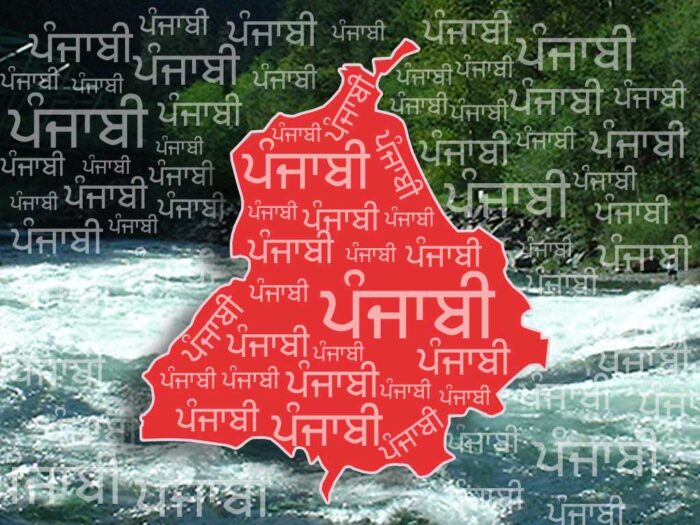 Punjabi media has been filled with debates over language, education, migration, and the credibility of relief funds. Together, these issues have created an atmosphere of unease among ordinary people who feel that their culture, their children’s future, and even their donations for disaster relief are under threat. The concerns may appear diverse on the surface, but at their core they reflect a crisis of confidence in governance, law enforcement, and respect for Punjab’s identity.
Punjabi media has been filled with debates over language, education, migration, and the credibility of relief funds. Together, these issues have created an atmosphere of unease among ordinary people who feel that their culture, their children’s future, and even their donations for disaster relief are under threat. The concerns may appear diverse on the surface, but at their core they reflect a crisis of confidence in governance, law enforcement, and respect for Punjab’s identity.
One of the most emotional complaints has been that in some schools, children are discouraged or even prevented from speaking Punjabi. Parents argue that when Punjabi is the official language of the state, there should be no hesitation in allowing children to use it freely. Instead, in certain private and English-medium schools, children are told to stick to English during conversations, as if Punjabi is a barrier to progress. This attitude not only undermines cultural pride but also threatens the linguistic roots of a whole generation. The government has issued notices and even discussed penalties for schools that ignore Punjabi, yet on the ground, the enforcement remains weak and inconsistent.
The problem is not limited to schools. Across government and semi-government offices, citizens complain that employees are reluctant to deal with clients in Punjabi. Instead, they often use Hindi or English, leaving ordinary Punjabi-speaking people at a disadvantage. The Punjab Bhasha Act was created precisely to protect against this neglect, and officials can be punished under it, but few cases of enforcement ever come to light. Many argue that officials avoid Punjabi because of poor training in using the language in official documentation, while others simply prefer the “prestige” of English. Whatever the reasons, the result is the same: the common man feels alienated in his own land when seeking services from his own government.
Another sensitive point raised repeatedly is the changing face of schools and colleges, where a significant portion of the students are now children of migrants. Local families are beginning to wonder where their own children stand in this competition for seats and attention. When classrooms fill with migrant children, locals feel that the cultural fabric is being altered, and resources stretched thin. Without clear policies to ensure that local students get their fair share of opportunities while migrant children are integrated through language and bridging support, the issue is bound to grow sharper and more divisive.
At the same time, news reports and social discussions highlight cases where migrants have occupied huts or makeshift houses, only to furnish them with televisions, refrigerators, submersible pumps, and other luxuries. For locals who struggle with their own economic challenges, this sight creates resentment, especially when it appears that law enforcement or civic authorities are looking the other way. Critics say that the state has failed to enforce laws on illegal occupation or land misuse, and this silence encourages a sense of lawlessness. What is most damaging, however, is not only the act of encroachment but the perception that nobody in power is willing to intervene, leaving ordinary Punjabis feeling both insecure and ignored.
The controversy over flood relief funds has further deepened mistrust. In the wake of recent natural disasters, people opened their hearts and wallets to help those affected, but soon after, doubts began to surface. Many citizens openly question whether the money collected in the name of relief will actually reach the victims or whether it will be quietly diverted for political campaigning in the run-up to the 2027 assembly elections. Opposition leaders have fueled this suspicion by pointing out the lack of transparency in the relief mechanisms, and some have even discouraged donations altogether. Without proper audits, independent oversight, and public disclosure of how funds are spent, such doubts are bound to fester, leaving victims unreached and donors disillusioned.
When seen together, these concerns reveal a deeper anxiety that Punjab’s identity and resources are slipping away unchecked. The suppression of Punjabi in schools and offices, the demographic changes in classrooms, the unchecked spread of migrant settlements, and the opacity of relief fund usage are all parts of the same story: a governance system that is reactive rather than proactive, and one that often avoids hard enforcement of its own rules. While laws and orders do exist, they are rarely followed through with the consistency and seriousness that would restore people’s trust.
What Punjab needs now is clarity, fairness, and accountability. Schools must be inspected and held to their obligation of giving Punjabi a respected place in education. Government employees must be trained, monitored, and even evaluated on their use of Punjabi while dealing with the public. Relief funds must be subjected to mandatory audits and their spending displayed openly for everyone to see. Migrant issues should be handled firmly but fairly, with illegal occupations curbed by law while genuine families are provided welfare support. Unless such steps are taken urgently, resentment will only deepen, and rumors will continue to replace facts in the public imagination.
Punjab has long been proud of its language, culture, and spirit of generosity, but pride alone cannot protect these values in the face of neglect. Stronger enforcement of existing laws, transparent governance, and sensitive handling of migration are not luxuries but necessities. Only then can people believe that the state is on their side, their culture is respected, and their contributions to relief and welfare are not misused for politics. The choice before Punjab is clear: either confront these challenges honestly today, or risk watching trust, culture, and identity erode silently tomorrow.